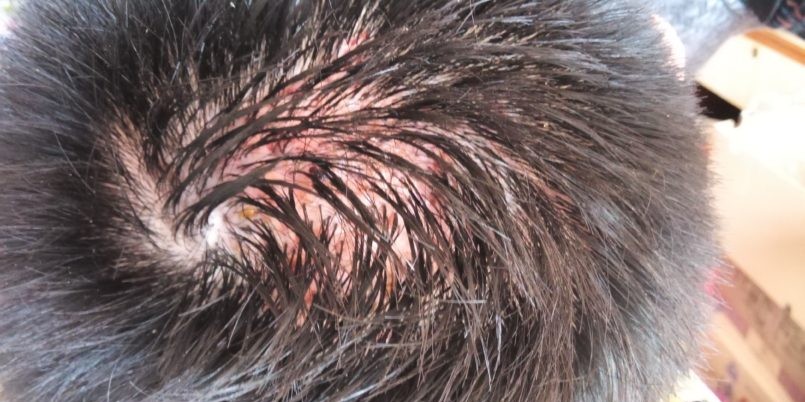
Folliculitis Decalvans
For more information or to book an appointment please contact us on
1. Stress management can be quite helpful as it
is the most common cause.
2. Infection and permanent skin damage are most
likely to occur in such cases if not treated at an early stage.
3. Getting proper help at the right will help a
lot in dealing with Trichotillomania.
4. We at Royal Hairnic are completely focused on providing the best medical care possible. Our trustworthy staff will be with you all along making your experience with us worthwhile.
OTHER FACTORS TO CONSIDER:
1. This condition requires a long term treatment plan from your
doctor because even though folliculitis may eventually stop but patients
experience flares for months ahead.
2. Camouflaging bald spots with hairpieces and wigs may help with
the appearance so that social life need not be sacrificed.
3. Antiseptic shampoo may be used to reduce germs on the scalp and
keep the scalp healthy.
4. Shampoo having tar as an ingredient may help overcome scaling
over the scalp.
5. You can reach out to us and be assured that every step in the
process will be well explained and monitored at Royal Hairnic.
TREATMENT:
1. No specific treatment is licensed for folliculitis decalvans, as
the condition is so rare, no sufficient clinical trial data exists to prove
that a therapy works for sure.
2. Medicated shampoos, anti-inflammatory, and antibacterial scalp
solutions may be prescribed.
3. Oral medication such as antibiotics containing clindamycin and
rifampicin may be prescribed to supplement the topical medication.
4. In some cases, reports include steroid injections, steroids by
mouth for severe flares.
5. Since there is no exact proven treatment, at Royal Hairnic we
understand the complexities of the condition and we have always been with our
patients at every step for the best results desired.
DIAGNOSIS:
1. A thorough dermatoscopic examination of the scalp to determine and confirm that the alopecia is scarring.
2. A magnifying light may be used to have a closer look at the hair
follicles.
3. It is crucial to take skin samples of the scalp for bacterial and fungal infection as a ringworm infection looks like folliculitis decalvans.
4. The skin sample is studied under the microscope to confirm the
diagnosis.
5. A dermatologist may opt for several options to determine the best possible treatment based upon the above steps. At Royal Hairnic our specialist doctors have always been committed to evaluating all the options before deciding upon the best course of action.
CAUSES:
1. Factors causing Folliculitis decalvans are not yet known. But
the condition may reflect abnormal host reaction to bacterial antigens known as
Staphylococcus aureus present on healthy skin.
2. Such abnormal reaction towards staphylococci bacteria could
explain the chronic and cicatricial pattern of progression in this type.
3.A recent study was able to demonstrate the presence of a
bacterial biofilm on the infundibulum of affected hair follicles, and this
could explain the recurrence character of the condition
SIGNS/SYMPTOMS:
1. Clinically it begins with a follicular lesion causing
perifollicular erythema, and then a pustule with the hair at its centre
develops.
2. Next crust forms detaching the hair with it.
3. As time passes little patches of scarring appear varying in size
such as oval or round.
4. These patches result in slow-spreading alopecia and the older
affected areas have scarring with no trace of the lesion.
5. Individuals may report burning sensation or burning and might
find bloodstains on the pillow from the lesions.
6. A striking feature is that several hairs (‘tufts’) exit from a
single hair follicle on the scalp skin. This is called ‘tufting’
7. Bald patched may develop in size over time and can be quite
visible.
For more information
or to book an appointment please contact us on
